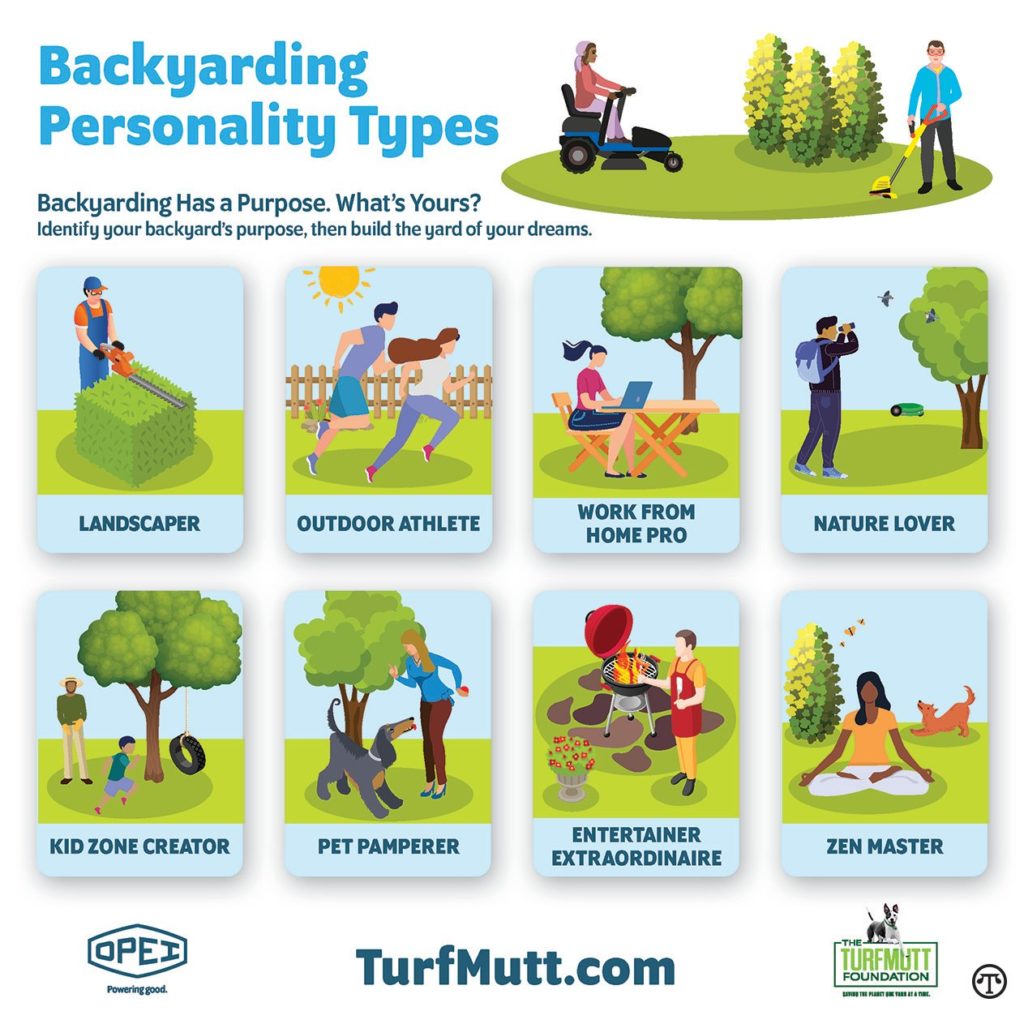Calling All Backyarders: Fall Is Your Time

(NAPSI)—Backyarding, the trend to move many indoor activities outdoors, is now a permanent way of life. During the pandemic, learning to work, entertain, vacation, work out and more right in one’s own backyard, became a necessity—and people are learning it’s often a better way to live.
According to the TurfMutt Foundation, identifying your backyarding personality type is an important first step in creating a backyard that supports your family’s needs and desires.
“Fall, in particular, is a critical season for your backyard,” says Kris Kiser, President of the TurfMutt Foundation. “The work you put into your yard now will reap benefits all year long. Remember: Work your landscape and your landscape will work for you.”
Two backyarding personality types in particular—the Expert Landscaper and the Work from Home Pro—can really shine this fall. Here’s why:
Expert Landscaper
This personality type knows that yard work done in the fall provides a double benefit because what you do in autumn to maintain your yard sets the stage for its health and vibrancy come spring. Fall yard chores—removing leaves, pruning trees and cleaning out flower beds and garden plots—are a usual activity for you.
Work From Home Pro
As a work from home professional, you have been living for fall when the temperatures are perfect for taking your office outside. All you need is a strong Wi-Fi connection, your nicest leisure wear and a jacket for chilly morning meetings and you’re ready for work in your backyard. Nature is your video call backdrop and you have set up your outdoor office for success by using shrubs and patio planters to distinguish your outdoor office space from other backyard activity zones.
What do these personality types know to do this fall? No matter your backyarding personality type, you can have a fabulous family yard this fall and beyond with these simple steps:
Remove leaves. Mulching leaves rather than raking and bagging them is good for your lawn and the environment. As shredded leaves decompose they feed your lawn, naturally.
Mow at the right height. Cut grass until the first hard frost. Find the just-right length for your lawn’s species (typically between 2-3 inches) to keep your grass healthy when it turns cold. Overseed grass and don’t forget to aerate the lawn in fall to prevent soil from becoming compacted and covered with thatch—a thick layer of roots, stems and debris that blocks water, oxygen and nutrients from reaching the soil.
Water wisely. If you’re not getting at least an inch of water each week, keep watering throughout the fall. Install watering solutions, such as smart controllers on irrigation systems, to conserve water.
Plant bulbs and flowering shrubs that will give blooms in spring and summer to feed pollinators, such as birds, bees and butterflies, as well as provide beauty for those natural, video conference backdrops.
Plant a tree for shade or cover. It may take a few years to grow to shade-producing height, but it’s an investment in your outdoor space.
Identify the ideal time to prune specific tree and shrub species and do so accordingly. Depending on what is in your yard, fall may be the perfect time.
Consider putting in decking or a hardscape to create an area to set up a desk or table. Make sure adequate electricity is available to power those laptops and other devices.
Sign up for Mutt Mail, a monthly e-newsletter with backyarding tips and all the news from the TurfMutt Foundation, at TurfMutt.com.

““The work you put into your yard now will reap benefits all year long. Remember: Work your landscape and your landscape will work for you,” says Kris Kiser, President of the TurfMutt Foundation.https://bit.ly/3kzINy3“
